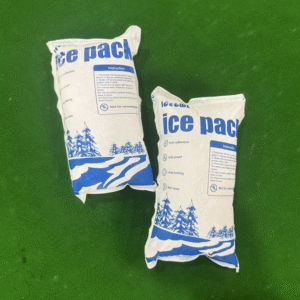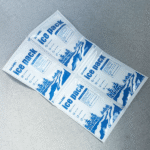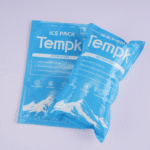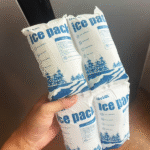Shipping temperature-sensitive goods requires precision, especially when they need to arrive quickly. Dry ice packs are an essential solution for maintaining ultra-low temperatures during express shipping, ensuring products such as vaccines, perishable foods, and biological samples remain at optimal temperatures throughout transit. This article explores how to effectively choose dry ice packs, the best practices for packing and shipping, and the latest trends shaping express shipping in 2025.

-
What are dry ice packs, and how do they help with express shipping?
-
How to choose the right dry ice pack for your shipment?
-
What are the best practices for packing and shipping with dry ice?
-
How do you ensure regulatory compliance for dry ice shipments?
What Are Dry Ice Packs, and Why Are They Crucial for Express Shipping?
Dry ice packs are solidified carbon dioxide that sublimate at -78.5°C, providing a reliable solution for keeping sensitive goods frozen or chilled during shipping. Unlike water-based ice, dry ice does not melt, avoiding moisture damage. Instead, it sublimates directly into gas, maintaining a dry, cold environment that preserves the integrity of perishable goods. Whether transporting vaccines, food products, or biological samples, dry ice ensures that products remain at required temperatures, making it indispensable for express shipments.
Key Features of Dry Ice Packs for Express Shipping:
| Characteristics | Description | Significance for Express Shipping |
|---|---|---|
| Temperature Range | -78.5°C | Keeps items frozen or chilled |
| Sublimation Rate | 5–10 lbs every 24 hours | Ensures items stay cold for the duration of the shipment |
| Customizable Sizes | Available in blocks, pellets, sheets | Fits various shipping containers and needs |
Dry ice packs are ideal for short-to-medium shipping durations, typically lasting up to 48 hours, depending on the shipment conditions and packaging. Understanding these characteristics will help in selecting the most suitable dry ice pack for your needs.
How to Choose the Right Dry Ice Pack for Express Shipping?
1. Understand Your Cooling Requirements
The first step in choosing the right dry ice pack is determining the specific cooling needs of your shipment. Products like vaccines or medical samples may require more dry ice due to their stringent temperature requirements, while food products may need less. Calculating the cooling duration and temperature range will guide you in selecting the appropriate pack.
2. Select the Right Size and Type of Pack
Dry ice is available in various forms:
-
Blocks: Ideal for long-duration shipments, as they sublimate more slowly.
-
Pellets: Useful for small items or short-distance shipments, offering rapid cooling and flexibility.
-
Sheets: Best for evenly distributed cooling over a larger surface area.
For express shipments lasting under 24 hours, pellets or sheets are often sufficient, while blocks are better for extended durations or when higher cooling capacity is needed.
3. Factor in Packaging and Insulation
Proper insulation is essential to extend the effectiveness of dry ice. Use insulated containers that help retain the cold air and minimize the loss of heat. Without adequate insulation, dry ice will sublimate too quickly, reducing its cooling power.
| Factor to Consider | Importance for Express Shipping | Action You Should Take |
|---|---|---|
| Cooling Duration | Determines how long items stay cold | Choose dry ice based on the duration of shipping |
| Pack Type | Ensures optimal cooling effect | Use blocks for long durations, pellets for short ones |
| Insulation | Extends dry ice life | Always use insulated containers to maximize cooling |
Best Practices for Packing and Shipping with Dry Ice
1. Safety Guidelines for Handling Dry Ice
Handling dry ice requires care to avoid injuries such as frostbite or suffocation:
-
Always wear protective gloves or use insulated tongs to handle dry ice.
-
Store dry ice in a well-ventilated area to prevent carbon dioxide buildup.
-
Never store dry ice in sealed containers, as pressure buildup can cause rupture.
2. Packing Guidelines for Dry Ice Shipments
-
Dry Ice Placement: Always place dry ice on top of the goods, as cold air sinks. This ensures the items remain cold throughout the shipment.
-
Insulation: Use thick, high-quality insulation materials to retain cold and minimize sublimation.
-
Labeling: Clearly mark packages containing dry ice with appropriate labels such as “Dry Ice” or “Carbon Dioxide, Solid,” and ensure the package includes the net weight of the dry ice.
| Packing Element | Best Practice | Action You Should Take |
|---|---|---|
| Dry Ice Placement | Place dry ice on top of the items | Ensure items are fully surrounded by dry ice |
| Insulation | Use thick insulation | Choose packaging with high thermal resistance |
| Labeling | Label all packages with dry ice notices | Mark packages with “Dry Ice” and net weight in kilograms |
3. Temperature Monitoring and Adjustment
For sensitive goods, such as pharmaceuticals, it’s critical to monitor temperature during transit. Use temperature loggers to track the cooling process, and adjust the quantity of dry ice or insulation as needed to ensure the products stay within the required temperature range.
2025 Trends in Dry Ice for Express Shipping
1. Integration of Smart Technologies
The advent of IoT-based smart sensors has revolutionized dry ice shipping. These sensors provide real-time temperature monitoring, allowing shippers to track the conditions of their goods throughout the entire transit process. This technology helps reduce the risks associated with temperature deviations and enhances the reliability of cold chain logistics.
2. Eco-Friendly Practices
As sustainability becomes more crucial, the shipping industry is exploring eco-friendly alternatives to traditional dry ice. Biodegradable materials and reusable packaging are gaining popularity, helping companies reduce their environmental footprint while still maintaining temperature integrity.
3. Advanced Insulation and Hybrid Solutions
Hybrid cooling systems, which combine dry ice with phase-change materials (PCMs), are becoming more prevalent in the market. These systems provide more stable temperatures and help reduce the amount of dry ice needed, making them a cost-effective and environmentally friendly solution.
Frequently Asked Questions
Q1: How long do dry ice packs last in express shipping?
Dry ice packs typically last 24-48 hours, depending on the size and quality of insulation used.
Q2: Is dry ice safe for shipping vaccines?
Yes, dry ice is ideal for shipping vaccines that require ultra-low temperatures. Ensure your packaging is adequately insulated to maintain the required temperature.
Conclusion
In 2025, dry ice packs continue to play a crucial role in express shipping, especially for temperature-sensitive goods. By understanding how to select the right dry ice, follow best packing practices, and stay informed about trends and regulations, you can ensure the safe and efficient delivery of your products.
Actionable Steps:
-
Assess your shipping needs and calculate the right amount of dry ice.
-
Use insulated containers and proper labeling to ensure compliance.
-
Invest in temperature tracking devices for real-time monitoring during transit.
About Tempk
Tempk is a leading provider of cold chain solutions, specializing in dry ice packs, gel packs, and insulated containers for express shipping. With a focus on quality and reliability, we ensure that your temperature-sensitive products are shipped safely and efficiently.
For more information, contact Tempk today to optimize your cold chain logistics strategy.























